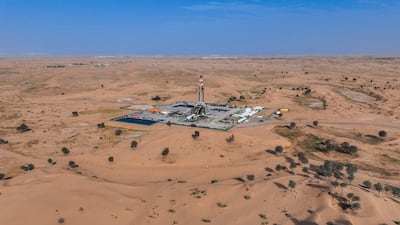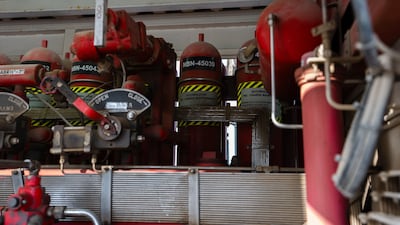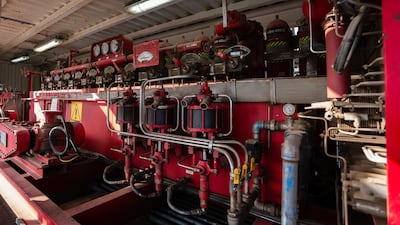Plate tectonics, the fundamental theory of our planet, is so recent that its discoverers are only just passing from the scene.
While the pioneers of quantum mechanics or relativity belong to the early twentieth century, Jason Morgan of Princeton University died in July, aged 87, while three other greats, Dan McKenzie, Frederick Vine and John Dewey, at 82, 84 and 87 respectively, are still with us.
Their theory continues to surprise and illuminate, explaining the distribution and evolution of earthquakes, volcanoes, mountains, past climates – and hydrocarbon and mineral resources.
Of course, they had precursors. German meteorologist Alfred Wegener in 1912 pointed to numerous lines of evidence that now far-separated continents, such as Africa and South America, fitted together neatly and must have once been joined. But he could not explain how these vast masses of rock could have ploughed through the ocean floor.
British geologist Arthur Holmes solved this problem by proposing in 1919 that continents moved passively by the flow of the hot mantle rocks beneath them over millions of years.
Measuring the proportions of radioactive isotopes in rocks, he was the first to come to an accurate estimate of the age of the Earth, at around 4.5 billion years, giving enough time for plates to move long distances at a few millimetres per year.
After the Second World War, sonar measurements of the ocean floor by Princeton’s Harry Hess revealed the true geometry and scale of the mid-ocean ridges, where new crust is made, and trenches, where it sinks back into the mantle.
In 1963, Cambridge’s Mr Vine – as work for his doctoral thesis – and Drummond Matthews published measurements of the magnetism of the oceanic rocks, showing neat stripes where the Earth’s magnetic field had reversed, and allowing the two sides of each mid-ocean ridge to be matched up and dated.
The seminal year was 1967. Mr Morgan’s paper demonstrated how the Earth’s surface was divided into about 12 large, rigid plates, which shift relative to each other, carrying continents and islands on top of them.
Cambridge University’s Mr McKenzie, who taught me, had only just achieved his PhD, on convection in the mantle, when he published in Nature on the mathematics of oceanic plate movement.
It now seems amazing that we were almost ready to land on the Moon before we knew the basics about how our own Earth works.
Before plate tectonics, we did not understand why the Pacific is ringed by volcanoes and earthquakes, why the Himalayas are where they are, how dinosaurs managed to cross from South America to Africa, or why the rocks of the Middle East record both hot deserts and frozen ice-caps.
Now we see that different parts of the Pacific plates are diving under areas such as the Americas, Japan and New Zealand and melting as they sink, feeding volcanoes with magma and recycling carbon and water. We know that India is colliding with Asia, pushing up the world’s greatest mountain range, and profoundly altering the local and global climate.
The great oilfields of the Middle East were mostly found by good local geological work before the knowledge of wider plate movements.
But plate tectonics explains the region’s enormous bounty of oil and gas.
As Arabia drifted gradually from chilly southern latitudes across the equator, organic matter accumulated on the floor of vast shallow subtropical seas. Then, some 50 million years ago, the Arabian plate and the attached Zagros of Iran and Iraq began colliding with central Iran, cooking this material into petroleum.
Mr McKenzie’s discoveries were well-timed for Europe. He modelled the creation of sedimentary basins, where part of the Earth’s continental crust is stretched and sinks.
The North Sea is a classic example of such a basin. In 1967, the UK North Sea’s first gasfield started production. Further exploration made it into one of the world’s leading petroleum-producing areas, helping to revive the UK’s economy and Europe’s energy security after the 1970s oil crises.
The fit between Africa and South America noticed by Mr Wegener has been fruitful more recently. The find of the Jubilee field in Ghana in 2007 led companies across the Atlantic to French Guiana, then west to Guyana and Suriname, rewarded since 2015 with a string of huge oil finds.
But this is not just as simple as matching up former conjoined regions. The “pre-salt” region in Brazil has been enormously successful for huge oil and gasfields; its equivalent basin in Angola holds much less, and that mostly gas.
The recent massive finds in deepwater Namibia by TotalEnergies, Shell and Galp have now turned attention to the corresponding but unexplored area across the Atlantic. More subtle geological differences between the African and South American margins suggest that Argentina and Uruguay might be even more promising than Namibia. By about 2027, we should know whether this potential will be borne out.
Such geological considerations also control where critical global minerals are found – such as the belt of copper and silver down the Pacific coast of Central and South America.
It tells us why Oman and the northern UAE have some of the most promising rocks globally for trapping carbon dioxide, relics of an ancient ocean plate forced up over land. And we have some grasp of past climatic shifts, such as how the split of Antarctica from southern South America allowed freezing seas to sweep round the southern continent and usher in the most recent Ice Ages.
There is still much we do not fully understand about plate tectonics. When did it begin – 3.5 billion years ago or even earlier, or much more recently, after the Earth’s mantle had cooled? And beyond our pale blue dot, our closest neighbours, Mars and Venus, don’t seem to have plate tectonics, but do Earth-like planets in other solar systems have them? Is its recycling of elements and stabilisation of climate essential for complex life to evolve and survive?
This recent, rich and profound framework continues to yield new material and intellectual benefits.
Students and scientists in the Middle East are fortunate to have some of the most striking and important geology in the world around them.
And it’s a rare situation in science when the giants of such a fundamental advance are still around to instruct and inspire us.
Robin M. Mills is chief executive of Qamar Energy and author of The Myth of the Oil Crisis
French business
France has organised a delegation of leading businesses to travel to Syria. The group was led by French shipping giant CMA CGM, which struck a 30-year contract in May with the Syrian government to develop and run Latakia port. Also present were water and waste management company Suez, defence multinational Thales, and Ellipse Group, which is currently looking into rehabilitating Syrian hospitals.
The specs
Engine: 4.0-litre V8 twin-turbocharged and three electric motors
Power: Combined output 920hp
Torque: 730Nm at 4,000-7,000rpm
Transmission: 8-speed dual-clutch automatic
Fuel consumption: 11.2L/100km
On sale: Now, deliveries expected later in 2025
Price: expected to start at Dh1,432,000
The Sand Castle
Director: Matty Brown
Stars: Nadine Labaki, Ziad Bakri, Zain Al Rafeea, Riman Al Rafeea
Rating: 2.5/5
Muslim Council of Elders condemns terrorism on religious sites
The Muslim Council of Elders has strongly condemned the criminal attacks on religious sites in Britain.
It firmly rejected “acts of terrorism, which constitute a flagrant violation of the sanctity of houses of worship”.
“Attacking places of worship is a form of terrorism and extremism that threatens peace and stability within societies,” it said.
The council also warned against the rise of hate speech, racism, extremism and Islamophobia. It urged the international community to join efforts to promote tolerance and peaceful coexistence.
Ferrari 12Cilindri specs
Engine: naturally aspirated 6.5-liter V12
Power: 819hp
Torque: 678Nm at 7,250rpm
Price: From Dh1,700,000
Available: Now
Crops that could be introduced to the UAE
1: Quinoa
2. Bathua
3. Amaranth
4. Pearl and finger millet
5. Sorghum
Dubai works towards better air quality by 2021
Dubai is on a mission to record good air quality for 90 per cent of the year – up from 86 per cent annually today – by 2021.
The municipality plans to have seven mobile air-monitoring stations by 2020 to capture more accurate data in hourly and daily trends of pollution.
These will be on the Palm Jumeirah, Al Qusais, Muhaisnah, Rashidiyah, Al Wasl, Al Quoz and Dubai Investment Park.
“It will allow real-time responding for emergency cases,” said Khaldoon Al Daraji, first environment safety officer at the municipality.
“We’re in a good position except for the cases that are out of our hands, such as sandstorms.
“Sandstorms are our main concern because the UAE is just a receiver.
“The hotspots are Iran, Saudi Arabia and southern Iraq, but we’re working hard with the region to reduce the cycle of sandstorm generation.”
Mr Al Daraji said monitoring as it stood covered 47 per cent of Dubai.
There are 12 fixed stations in the emirate, but Dubai also receives information from monitors belonging to other entities.
“There are 25 stations in total,” Mr Al Daraji said.
“We added new technology and equipment used for the first time for the detection of heavy metals.
“A hundred parameters can be detected but we want to expand it to make sure that the data captured can allow a baseline study in some areas to ensure they are well positioned.”
UPI facts
More than 2.2 million Indian tourists arrived in UAE in 2023
More than 3.5 million Indians reside in UAE
Indian tourists can make purchases in UAE using rupee accounts in India through QR-code-based UPI real-time payment systems
Indian residents in UAE can use their non-resident NRO and NRE accounts held in Indian banks linked to a UAE mobile number for UPI transactions
Gothia Cup 2025
4,872 matches
1,942 teams
116 pitches
76 nations
26 UAE teams
15 Lebanese teams
2 Kuwaiti teams
Our legal consultants
Name: Hassan Mohsen Elhais
Position: legal consultant with Al Rowaad Advocates and Legal Consultants.
Best Academy: Ajax and Benfica
Best Agent: Jorge Mendes
Best Club : Liverpool
Best Coach: Jurgen Klopp (Liverpool)
Best Goalkeeper: Alisson Becker
Best Men’s Player: Cristiano Ronaldo
Best Partnership of the Year Award by SportBusiness: Manchester City and SAP
Best Referee: Stephanie Frappart
Best Revelation Player: Joao Felix (Atletico Madrid and Portugal)
Best Sporting Director: Andrea Berta (Atletico Madrid)
Best Women's Player: Lucy Bronze
Best Young Arab Player: Achraf Hakimi
Kooora – Best Arab Club: Al Hilal (Saudi Arabia)
Kooora – Best Arab Player: Abderrazak Hamdallah (Al-Nassr FC, Saudi Arabia)
Player Career Award: Miralem Pjanic and Ryan Giggs
OPINIONS ON PALESTINE & ISRAEL
Killing of Qassem Suleimani
Zakat definitions
Zakat: an Arabic word meaning ‘to cleanse’ or ‘purification’.
Nisab: the minimum amount that a Muslim must have before being obliged to pay zakat. Traditionally, the nisab threshold was 87.48 grams of gold, or 612.36 grams of silver. The monetary value of the nisab therefore varies by current prices and currencies.
Zakat Al Mal: the ‘cleansing’ of wealth, as one of the five pillars of Islam; a spiritual duty for all Muslims meeting the ‘nisab’ wealth criteria in a lunar year, to pay 2.5 per cent of their wealth in alms to the deserving and needy.
Zakat Al Fitr: a donation to charity given during Ramadan, before Eid Al Fitr, in the form of food. Every adult Muslim who possesses food in excess of the needs of themselves and their family must pay two qadahs (an old measure just over 2 kilograms) of flour, wheat, barley or rice from each person in a household, as a minimum.
The biog
Age: 59
From: Giza Governorate, Egypt
Family: A daughter, two sons and wife
Favourite tree: Ghaf
Runner up favourite tree: Frankincense
Favourite place on Sir Bani Yas Island: “I love all of Sir Bani Yas. Every spot of Sir Bani Yas, I love it.”
The view from The National
How much do leading UAE’s UK curriculum schools charge for Year 6?
- Nord Anglia International School (Dubai) – Dh85,032
- Kings School Al Barsha (Dubai) – Dh71,905
- Brighton College Abu Dhabi - Dh68,560
- Jumeirah English Speaking School (Dubai) – Dh59,728
- Gems Wellington International School – Dubai Branch – Dh58,488
- The British School Al Khubairat (Abu Dhabi) - Dh54,170
- Dubai English Speaking School – Dh51,269
*Annual tuition fees covering the 2024/2025 academic year
Stage results
1. Julian Alaphilippe (FRA) Deceuninck-QuickStep 4:39:05
2. Michael Matthews (AUS) Team BikeExchange 0:00:08
3. Primoz Roglic (SLV) Jumbo-Visma same time
4. Jack Haig (AUS) Bahrain Victorious s.t
5. Wilco Kelderman (NED) Bora-Hansgrohe s.t
6. Tadej Pogacar (SLV) UAE Team Emirates s.t
7. David Gaudu (FRA) Groupama-FDJ s.t
8. Sergio Higuita Garcia (COL) EF Education-Nippo s.t
9. Bauke Mollema (NED) Trek-Segafredo s.t
10. Geraint Thomas (GBR) Ineos Grenadiers s.t
Global state-owned investor ranking by size
|
1.
|
United States
|
|
2.
|
China
|
|
3.
|
UAE
|
|
4.
|
Japan
|
|
5
|
Norway
|
|
6.
|
Canada
|
|
7.
|
Singapore
|
|
8.
|
Australia
|
|
9.
|
Saudi Arabia
|
|
10.
|
South Korea
|












